Platform Bird Feeders
Platform bird feeders, also called tray feeders, are one of the most popular feeders for birds. And for good reason. They are simple to set up and fill, and attract the widest variety of birds. Read on for info on the different types of platform feeders, their pros and cons, and our tips on how to get the most out of platform bird feeders.
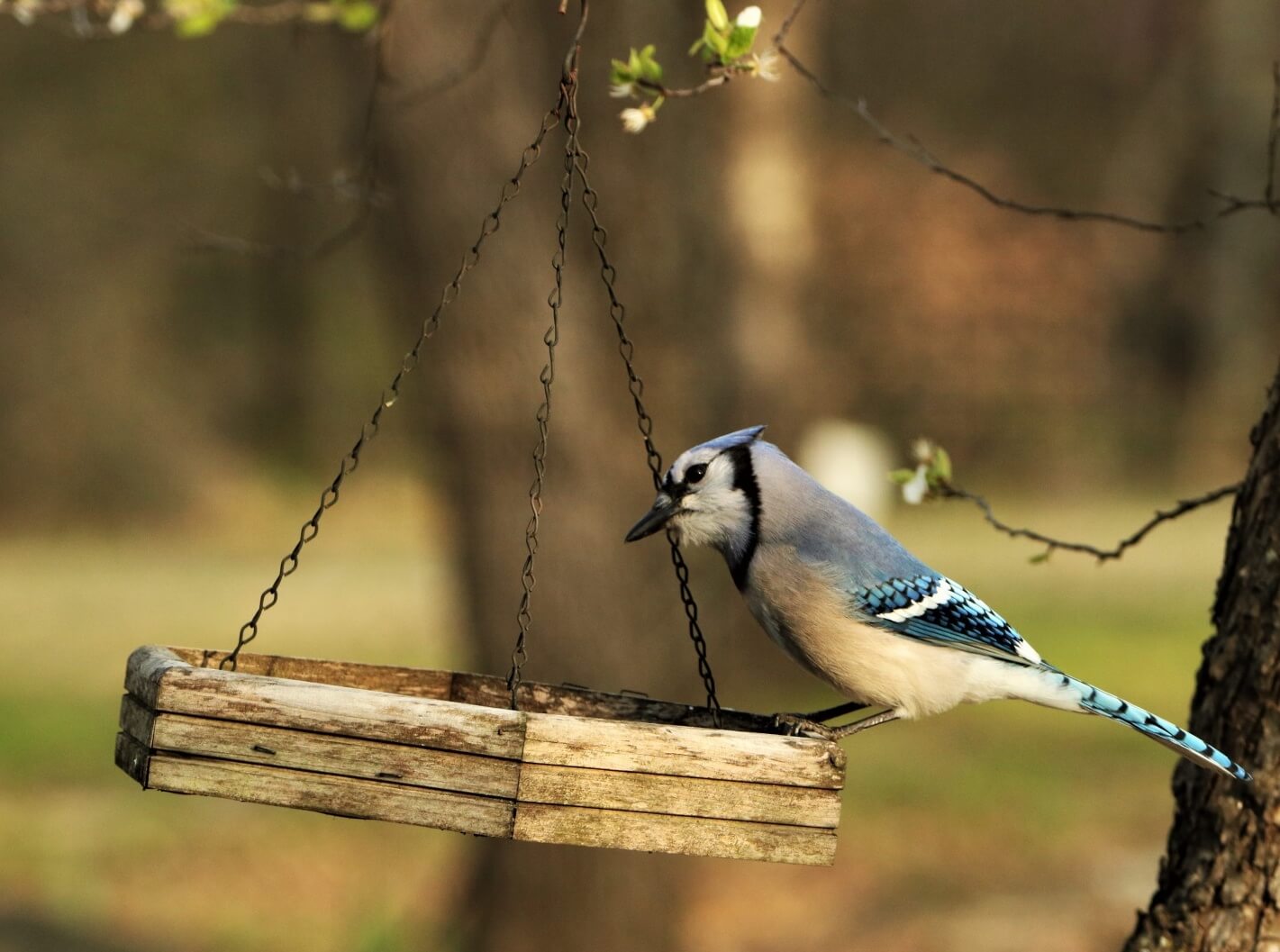
Platform feeders are the simplest type of feeder available. They consist of a level surface that birds can stand on to feed. That’s it. It doesn’t get more simple than that. But, there are a wide range of variations to the basic idea, and that’s where you will need to make a choice.
Pros and Cons
Platform feeders are often open to the elements, which means the seed you provide can be rained or snowed on. As a result, the seed is prone to spoiling quicker than with any other type of seed feeder. And they don’t hold as much seed as some other types, so you’ll have to refill them often. Because platforms are open, they also provide food for other hungry wildlife, like squirrels and deer. While this might be okay, you’ll be surprised at how quickly these mammals can empty a platform of seed, leaving none for the birds.
On the plus side, platforms tend to attract a wider range of bird species, and since they are open, it’s easier to observe them as they feed. And isn’t that part of the reason you want to attract birds in the first place?
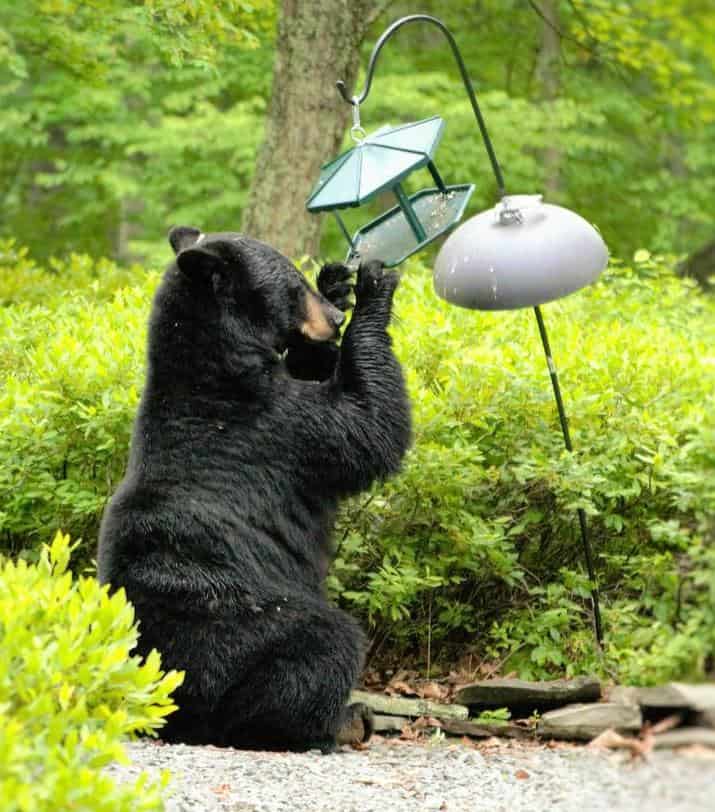 Black bear raiding a platform feeder
Black bear raiding a platform feederTypes
There are three main types of platforms: trays, globe or window feeders, and ground feeders. Here's a bit about each.
Trays
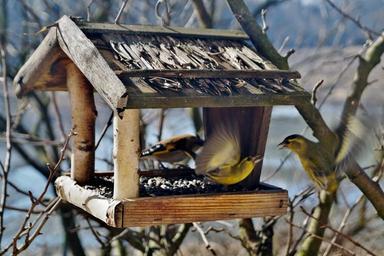
Tray feeders consist of a tray, either hung from a hook or tree, or attached to a stable surface, like a pole or deck railing. Most have a lip around the edge to keep the seed from blowing off, but others don't. And the birds don't seem to care one way or the other.
Some of the birds tray feeders can attract: pigeons, doves, starlings, finches, jays, cardinals, sparrows, titmice, towhees, grackles, and grosbeaks.
Globe or Window Feeders
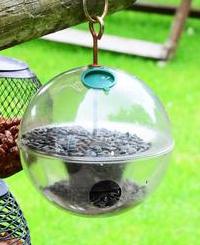 Globe feeder
Globe feederWe consider globe and window feeders to be types of platforms. Globe feeders are enclosed in a small globe of see-through plastic. Being enclosed, the seed doesn’t go bad as quickly as open platforms. But, they are smaller, and so restrict their visitors to the smaller birds, like sparrows, chickadees, and finches.
Window feeders attach to a window with suction cups. These bring the birds almost into your living room or kitchen, so they can give you great close-up looks at the birds. But like globe feeders, they are small (they must be lightweight to stay attached to your window), meaning they will only attract the smaller birds.
Some of the birds window and globe feeders can attract: finches, chickadees, titmice, and a few sparrows.
Ground Feeders
Ground feeders are another type of platform. They are simply a tray with short legs that you set on the ground. The advantage with ground feeders is that they will attract birds that may not come to more elevated platforms, or other feeder types.
Some of the birds that ground feeders can attract: doves, pigeons, juncos, jays, sparrows, towhees, goldfinches, cardinals, robins, grackles, and blackbirds.
Maintenance and Care
Like all bird feeders, you should clean platform bird feeders preferably every two weeks. This reduces the chance of disease developing in the birds that visit. Read here for more details on care and cleaning of bird feeders.
Summary
Platform bird feeders are popular and simple. And since they attract a wider variety of birds than any other feeder type, we recommend adding one to your backyard. The diversity they bring will enrich your backyard bird experience. Enjoy!
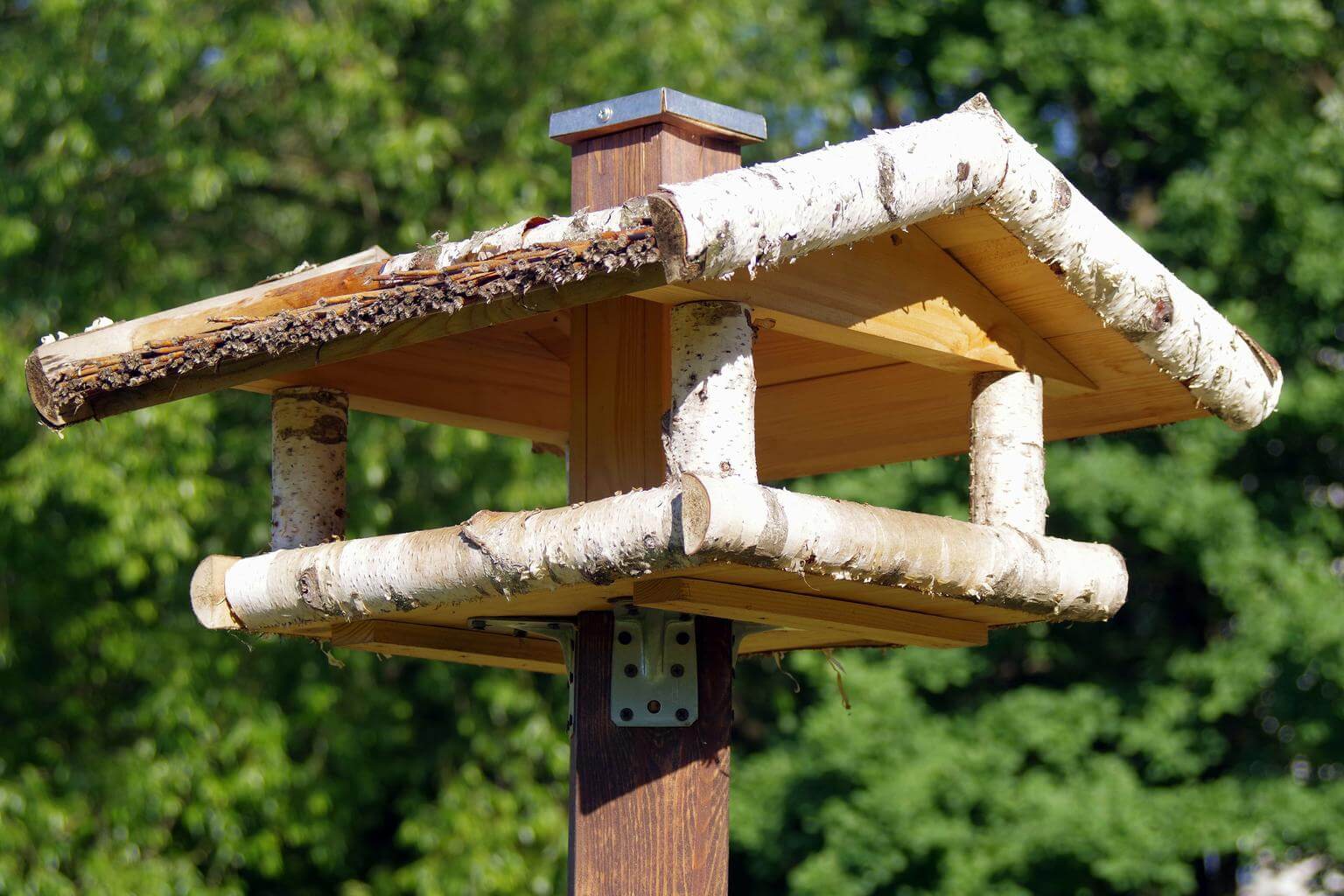 Pole mounted platform feeder
Pole mounted platform feeder